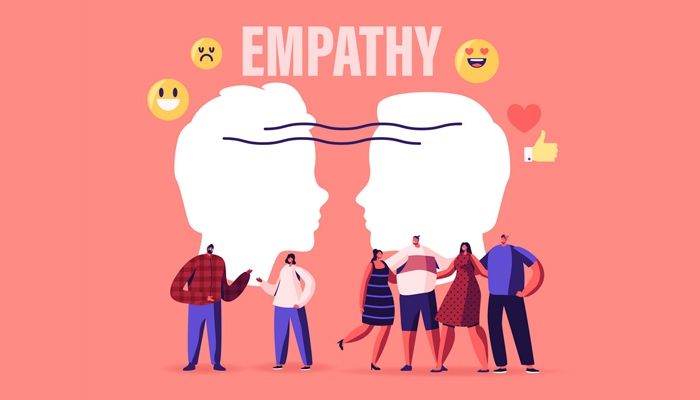
Building workplace empathy and emotional connect through storytelling
Unique formats of learning and creative art based ways of engaging employees are important. Inspiring the imagination and touching the hearts of individuals through various forms of storytelling is definitely worth considering.
We are in a virtual reality inspired by the pandemic. While Corporate India stays hyper connected through technology, are individuals sensing and feeling a human connection? Are employees able to share the truths about their lives without fearing judgment and consequence? Beyond the mosaics and filters of various digital meeting rooms, are we truly able to see the person behind the camera?
Inclusion requires the heart as much as it needs the mind. As organisations, we want to foster a culture of inclusion and belonging. In that breath, should we look at ways to create psychologically safe spaces that enable dialogue? How can we leverage the power of various creative arts to enable inter-personal trust, empathy and friendship? How can the arts help us care, share and be?
The power of storytelling
A culture is built by the stories we share. Stories help us immerse into a world very different from ours. We’re able to go on a journey with the characters and imagine their joys, fears and challenges. And then stories allow us to enter these worlds with our imagination and in that process, we begin to feel and understand the other.
When we tell the story of a woman juggling home and work, while delivering high performance, we understand the weight of dual responsibilities. It allows us to see our own lives in comparison and helps us understand her world. When we tell the story of this woman as a single mother, it further helps us see her resilience. When we tell the story of this woman and her child with a disability, we are able to immerse ourselves into her reality and build immense appreciation for her grit and commitment. When we tell the story of this woman managing all this without a support system, we develop a deep sense of respect and empathy towards this individual as we understand the many intersections at play. The nature of our conversations with this person is bound to change. We are able to engage in this relationship with sensitivity and admiration. We are able to learn from her lived experience and make it our own. We are able to feel life in her shoes. And then, with this shared understanding, we can create an environment that enables and accepts her for who she is, without judgment. And that is a beginning towards Inclusion.
When we engage with the lived experiences of our own team members it helps us broaden our understanding and build perspective. Can we create that psychological safe space where people are able to share their truths without censorship?
7 ways to leverage storytelling through various creative arts
Listening Circles:
Create a safe space and invite employees to share anecdotes from their lives. Allow people to respond with what that story did to them. While people listen in, they also reflect upon their own lived realities. Reflection is a starting point for any kind of inward change. Like Carl Jung says “If you don’t make the unconscious conscious, you will allow it to dictate your life and call it fate” Having the support of a domain expert to facilitate these listening sessions is important.
Micro Films:
Capturing real moments on video can be an excellent way to enter an alternate reality. When we see people talk about their lives, it re-inforces some of our own beliefs or questions them. Both are useful in the Inclusion journey. Getting leaders to talk about the importance of Inclusion on film and share their own story can be a good way to model inclusive behaviour.
Art expression& activity:
Asking employees to articulate and express how they imagine inclusive workplaces could be a starting point to understand where each of them are in their Inclusion journey. Asking employees to channelise this thought through collage or painting can help them reflect and question the status quo. Getting groups of people to do this together enables sharing of thought and perspective.
Internal Communication:
While an image is worth a thousand words, can we create a visual language that presents myriad realities? Illustrations/created images offer us the canvas to play and imagine these realities. These images can become nudges as they slowly and steadily enter the subconscious. We are trying to re-write Inclusion messaging that has been influenced by stereotypical presentation over many years. The more we start looking at inclusive imagery, we start accepting that as the new normal. These can manifest as curated zines, posters, postcards, story cards, digital playbooks and reflection journals that employees can access and engage with.
Podcasts & community conversations:
Encouraging people to vocalise their point of view is helpful simply because people will walk the talk once they’ve talked about Inclusion in public. Every time a bias plays out, it will help the individual pause and bring attention to what is going on and therefore alter behaviour.
Games & Gamified learning:
Play allows us to enter a childlike zone. This way, employees engage with concepts without the pressure of learning, yet learning is happening as part of the play. Creating board games on inclusion or digital immersive games are great ways to seed thought and drive action.
Theatre & Performance:
Various forms of theatre are extremely useful for employees to experience scenarios in the live medium. From interactive formats to applied theatre, the medium helps employees get into character lives first hand and understand various viewpoints.
Every idea is a possibility and it creates excitement and enthusiasm. Picking a few of these ideas and staying with them consistently is the key towards creating long term change. It’s important to acknowledge that the present pandemic and work from home situation has created screen fatigue and reduced attention & absorption spans. Hence unique formats of learning and creative art based ways of engaging employees are important. Inspiring the imagination and touching the hearts of individuals through various forms of storytelling is definitely worth considering.
About the author

Aruna is a performance director and a corporate facilitator. She leads Innovations in Inclusion at Interweave Consulting Pvt. Ltd. At Interweave, Aruna brings together various inter-disciplinary mediums (Art, theatre, storytelling, Games and technology) to create learning engagements that enable participants to go have dialogues around various diversity and inclusion themes.
She has worked with multiple brands like Microsoft, SAP, Myntra, RBS, Coca-Cola, Aditya Birla, Tata Realty, Ashok Leyland, CGI and NHRD where various innovative art based approaches have been used to enable Inclusion conversations around Gender, Unconscious Bias and generational diversity.
P.S – This blog was written for India’s best HR magazine – Business Manager – Making HR complete and was published on https://www.businessmanager.in/current-topics/222/building-workplace-empathy-and-emotional-connect-through-story-telling











